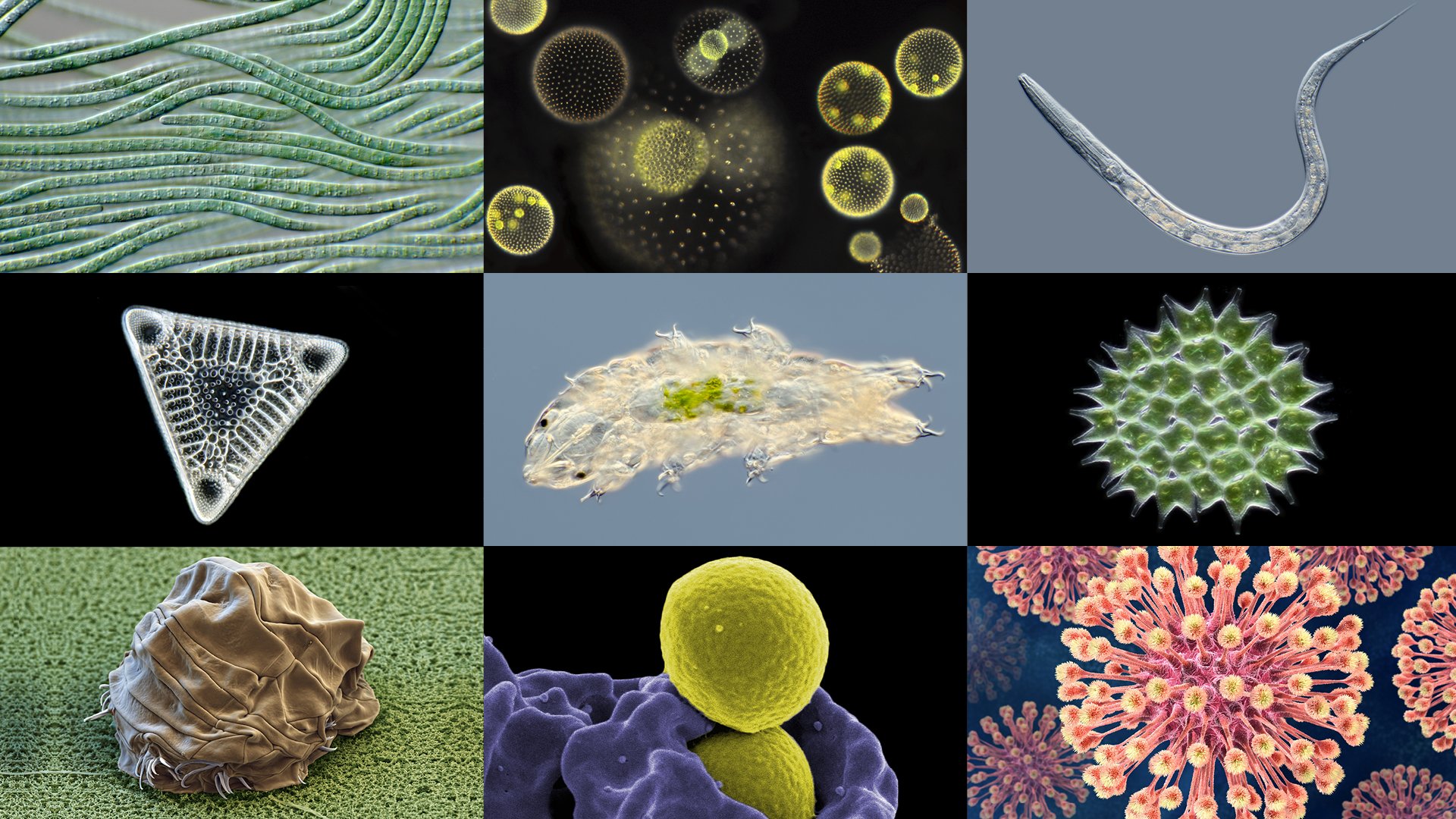A micro-organism or microbe is a creature that is too small to be seen with the naked eye. A bacteria, one of the smallest microbes could fit over one million times on the point of a needle.
A micro-organism or microbe is a creature that is too small to be seen with the naked eye. A bacteria, one of the smallest microbes could fit over one million times on the point of a needle.
First life
Micro-organisms include fungi, algae and micro algae, bacteria, archaea and microscopic animals. Micro-organisms were the first life on earth. Without them there could be no life on the planet.
All sorts and sizes
There are enormous numbers of different species and different micro-organisms within those species. Scientists estimate that there are about 100 million species and new ones are being discovered every day. Some species have only one cell and others have multiple cells. They come in all sorts of strange shapes and vary enormously in size. The average bacteria could easily fit 50 times within a hair’s breadth. Viruses are many times smaller.
Three domains
Microbes are divided into three domains of life on earth: bacteria, archaea and eukarya. Bacteria and archaea do not have cell nuclei and are therefore called prokaryote. Eukarya do have cell nuclei and are therefore termed eukaryote. All multicellular organisms, including humans, belong to the eukarya domain.
Well adapted
Micro-organisms live everywhere around us, including on and in our bodies. During the 3.5 billion years they have lived on earth, they have been able to adapt to almost every environment through the workings of evolution. They are now able to survive under the most extreme conditions, from those in hot geysers to those in the ice-cold waters of the Antarctic. Wherever there is food, there is also life. And microbes eat almost anything, even metals, acid, petroleum and natural gas.

